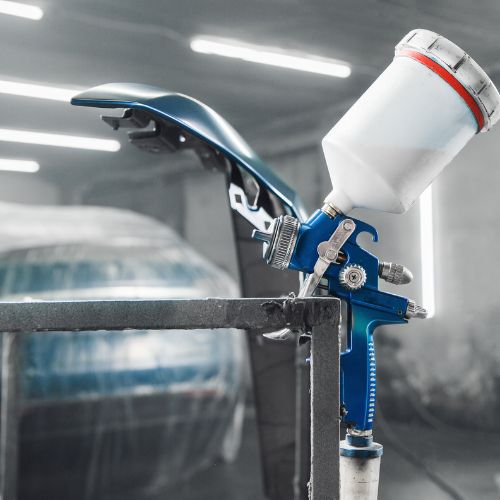Mastering the art of spray painting your car is an undertaking that many long to achieve. It’s a meticulous process that involves multiple steps. However, even the most careful individuals make mistakes that ruin the results. Here are some common mistakes to avoid when spray painting a car to transform it into a work of art.
Not Preparing Properly
Before you think about grabbing a can of paint, you need to diligently prepare your car’s surface. This process includes sanding down the old paint, using quality primers, and ensuring the surface is free of dust, rust, and debris.
One crucial step often overlooked is the need to clean the vehicle properly. The new paint won’t adhere well without removing all dirt and contaminants, leading to bubbling or peeling.
Another prep mistake is skipping the step of taping off areas you don’t want to paint, leading to overspray and affecting areas you intend to keep the original color. Ensure you have all the necessary supplies and that your work area has the proper setup to ensure success and an attractive paint job for your car.
2. Ignoring Weather Conditions
Weather plays a critical role in car painting. High humidity and extreme temperatures affect the paint’s drying and outcome. For instance, in high humidity, the paint may dry unevenly, leaving a mottled appearance. Extreme heat causes the paint to dry too quickly, resulting in a bumpy texture.
Select a day with moderate temperatures and low humidity for the best results. Always paint in a well-ventilated area to prevent the accumulation of fumes. Ideally, you should avoid painting in windy conditions to minimize dust and debris blowing onto the wet paint.
3. Rushing the Process
Patience is your best friend when it comes to car painting. Each paint layer must dry thoroughly before the next application. Rushing the process by applying subsequent layers before the previous one dries leads to the paint running or sagging. These errors are tricky to fix and may require sanding down and repainting the affected area, prolonging the project.
Be methodical and wait for the proper drying time between coats. Follow the instructions on the paint can as a guideline, and avoid handling the painted surface before it’s completely dry to the touch.
4. Applying Paint Incorrectly
The method you use to apply the paint is as important as the paint itself. Holding the spray can too close to the car results in uneven coverage and paint buildup. Additionally, not moving the can in a smooth and steady motion creates patches and visible lines in the paint, known as “tiger striping.”
Practice maintaining an appropriate distance from the car (usually around 8 to 12 inches), and keep the auto spray paint can in constant motion. Overlap each pass slightly for complete and even coverage.
5. Neglecting Safety Precautions
Spray painting your car exposes you to harmful chemicals and fumes, and neglecting to wear a protective mask poses serious health risks, such as lung irritation and nausea. It’s crucial to work in a well-ventilated area and to use a mask specifically for solvent-based paints.
Wear safety goggles to protect your eyes from the paint and fumes. They’ll also safeguard against debris if you’re doing any sanding. Additionally, wear appropriate clothing, such as long sleeves and thicker layers, to prevent contact with paint and protect your skin.
Avoid these common mistakes while spray painting your car for a professional-looking finish. Stay safe as you paint and stock up on supplies from Eagle National. We have all you need for a great paint job.


